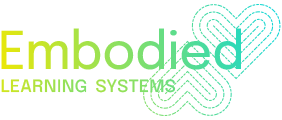
Is there a part of your body that you have marked for improvement? For me it was my feet. I used to hate my feet because they didn’t make a nice pointed shape in ballet class. Interesting that I ended up spraining both ankles many times! When I think back on it now, I clearly learned somewhere to separate parts of my body into two categories:
1) Mmmm, it’s ok I guess
2) It needs improvement
This kept me busy working on self-improvement, which basically translated as self-hate because I’d never be good enough. And if I did make an improvement, you can be sure that the bar would soon be raised – an attitude towards learning that was very common in dance classes in my youth.
This addiction to improvement became the number one block for healing injuries of all kinds – physical, emotional, spiritual. I’ll never forget the shock of learning that I could be aware of myself without judgement. Awareness is a simple tool that can get so twisted without us even knowing it. It’s also a first step in the Alexander Technique process – awareness without judgement, otherwise known as embodied acceptance. The word acceptance itself has a physical affect on me, a softening, an opening. I can breath.
Another term for awareness is focus. What kind of focus do you have right now? Narrow focus can result in excess tension and cause injury. That’s why when you get over-focused on healing, it can actually end up exacerbating an injury or generating a cycle of inter-related injuries.
I think that healing is needed in this world, but I’m super clear in my practice that I am not a healer. Healing is a process inherent to every living being but it needs certain conditions to kick in. The condition I’m writing about today is inclusion of your whole body without excluding any parts.
So what does healing mean, if it’s not about focusing on the problem?
We have to be really clear about exactly how to focus on process instead. Processes are what artists use to generate art. Processes are what bodies are really good at too. Eating, pooping, sweating, living, and dying. Moving through stuff, letting stuff move through us. Processes are something you stick with even when the going gets tough, confusing, even scary. Scary can be good (omg this feels too good!) or bad (omg this feels horrrrible I can’t stand it for one more second – but then, somehow you can stand it for one more second).
In a Mobilignment class, the process is to travel through all the parts of yourself to discover a new composition of the whole. You may encounter parts of yourself that you usually avoid. Since we never travel through along the same path, you will eventually be challenged in a good way. You get to visit those parts without getting stuck in them. You learn to include them in the party – even if they are metaphorically your embarrassing uncle! You only have to hang out with him for cocktails – and end up being surprised at the cool conversation you had.
A Mobilignment class is basically a mini -process designed on the spot based utilizing the elements of Mobilignment. Each time an element is introduced, I explain it as if to a beginner, so there is no worry about having to be an expert. Those elements are:
1) Awareness, Inhibition (quieting or non-doing of a particular action), and expansive Direction. These are Alexander Technique tools that improve postural tone in relationship to gravity such our heads are not being crunched down into our bodies.
2) Sequential mapping the cranial, cervical, thoracic, lumbar, and sacral dermatomes on our own bodies through imagination and touch. These are areas of skin innervated by different segments of the cranial and spinal nerves.
3) Spatial and kinesthetic awareness of the 19 special Mobilignment™ Points in stillness and in motion. These are 19 different points that link an important bony landmark to the dermatome that it lives in.
4) Sequential mapping of the 13 cranial nerves that have either sensory, motor, or both functions internally inside the body in addition to the skin on the outside.
Each class is an improvisational score. For example, last week we worked with:
– The 8th cranial nerve and sound
– The sound of breathing
– Moving arms and hands in the silent places between breath sounds
– The nose, skull, and jaw points and the effects of their mobility on hearing and making sound
– The heel point, radius point, and collar bone points in motion
– Dancing to Louis Armstrong and Ella Fitzgerald singing to each other
Through improvisation, we bypass habitual self-talk and self-image to discover todays version of the whole you! Healing is an inevitable by – product of the process.
Come to your first Mobilignment class for free if you would like to find out what this is like 🙂 Just email me for the link: clare@claremaxwell.com.
